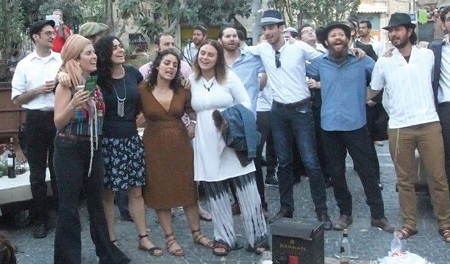
Havdalah in Jerusalem’s Zion Square
Photos & text: Lydia Aisenberg
A September Shabbat, after an incredibly hot and humid week, hundreds of religious and secular Jews - tourists and others - slowly make their way by foot in the late afternoon to Zion Square in Jerusalem.
Many of the buildings surrounding the square go back to the British Mandate period, sport blue heritage plaques with information in English and Hebrew, pages of history on the walls for all who might be interested to read, ponder in present times the not-so -long -ago past spread out on the buildings constructed with the beautiful pink-tinted white Jerusalem stone.
Zion Square has been the site over the years of many a raucous, raw and somewhat violent political or religious demonstration. Unfortunately, the busy commercial center has often been the chosen target of Palestinians carrying out dastardly acts of terror in the capital city.
However, what is happening here right now, the second Shabbat of the month, is not a demonstration of a political or religious nature, but a demonstration all the same – of togetherness, oneness - a celebration of being in a very special place as the magic of Shabbat that has descended on Jerusalem is slowly drawing to an end.
It is really uncanny that even though there are scores of people, mostly religious, decked out in their Shabbat finery, strolling down the wide, usually cacophonic Jaffa Street, in the middle of the road, everything is so quiet and restful - very soothing in fact.
Many of the people are gravitating to the square to share in the Havdalah (Separation) ceremony, a celebration of “between the sacred and the everyday”, the period where Shabbat draws to a close. This event has been organized spontaneously by caring citizens from a number of community-centered grass roots organizations who extended – through Facebook and other social media – an invitation to come and sit in the square, and to partake in sharing of food and drink – each bringing something to put on the tables – to just mix, kibbitz and for a major part of the gathering, sing, swing and dance the Shabbat out of their hair.
Families with small children, knitted and black satin kippas-wearing yeshiva-bochers, some very hip characters more in tune with the 60s types, elderly couples and tourists with Israeli guides explaining about Shabbat, and prayers recited as the day of rest winds to an end, all slowly enter the square, place food on the tables and pop the corks of wine and beer bottles. Some sit on raffia mats spread out on the ground and others sit under small trees planted in enormous containers, part of which is seating. This, one of so many interesting art installations in the city, is known as The Forest in the Square.
The atmosphere is relaxed, friendly and all-encompassing. Even if you didn’t know anybody, which was my case except for my Jerusalem resident friend from Wales whom I was visiting, you felt part of the party. People hug, peals of laughter rise from here, there and everywhere, young children squeal in delight as they run in and out of the tree installations or climb one of them. Others gleefully splash their hands in water flowing down a horizontally positioned enormous tree trunk stripped of its bark and planed as smooth as one of the babies you-know-whats, the tree trunk itself a glorious huge water trough.
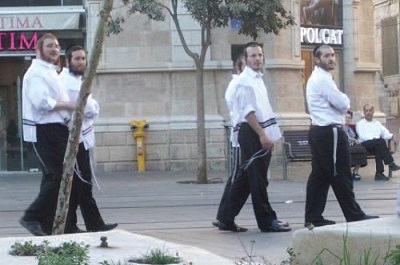
Walking the line – the electric tram lines that is – on Shabbat in Jerusalem
Although embarrassed that I personally cannot uphold the notion that all Welsh folk have powerful singing voices, and that I live in a totally secular community in northern Israel, when the singing in the square began I found it truly infectious. The energy of the younger folk as they – men and women separately – formed lines, arms stretched over their neighbors’ shoulders and swayed to and fro, bopping up and down. I at least managed to hum in tune.
Tin goblets with stickers showing an etching of one of the tree installations on one side were handed out by a number of young people. A second sticker on the other side of the goblet headed ‘Contemplating a half a glass of water’ encouraged the drinker to sit comfortably and observe the interaction in the square, take deep breaths and share the water, asking the holder “to pour the half-full or half-empty cup of water onto the tree or plant you are sitting next to.”
Even though my glass or goblet might have only been half-full or half-empty, depending on how one wants to see it, this particular Shabbat experience had my glass brimming over with a sense of sadness that bridging the differences between the religious and the secular, shared for those few hours in the square, is not the daily norm throughout the country every day of the week.
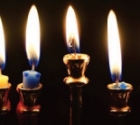 Chanukah 5777
Chanukah 5777 Advertisers Directory 187
Advertisers Directory 187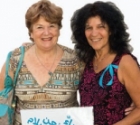 ‘Give Peace a Chance’ Duo at Ceremony
‘Give Peace a Chance’ Duo at Ceremony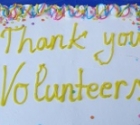 A new website in English - on Volunteering - Launched in Israel
A new website in English - on Volunteering - Launched in Israel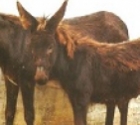 Help Needed for Abused Horses and Donkeys
Help Needed for Abused Horses and Donkeys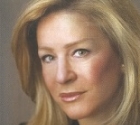 Heather's Heseg
Heather's Heseg Lydia Aisenberg
Lydia Aisenberg